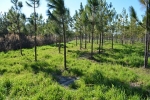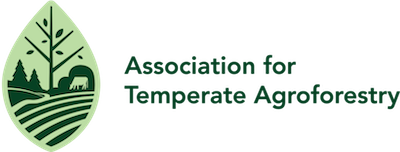| |
Hello Visitor,
Welcome to the October 2016 version of the Temperate Agroforester. The newsletter welcomes contributions for future issues and input or feedback about anything that you read in this issue.
Katie Commender & Uma Karki, Editors - Temperate Agroforester
Events
Membership
Are you a member of AFTA? If not consider joining by clicking here. Your membership gives you access to the members-only area, discounts on conference registration, and helps support AFTA's mission to promote agroforestry.
Contents
AFTAThe long-term goal is to sustain and maintain an AFTA award program that recognizes members and practitioners for their achievements in agroforestry. AFTA awards will enhance future programs and ensure continued interest in agroforestry practices. The AFTA Board of Directors is proposing four awards, granted biennially. The awards will be awarded at each North American Agroforestry conference (NAAC), beginning in 2017. Awards can be self-nominated or an individual is nominated by another. Award winners will be recognized during the biennial conference lunch on June 27, 2017.
- Outreach and Education Award (AFTA members only)
- Research Award (AFTA members only)
- Early Career Award (AFTA members only)
- Practitioner or Producer Award (AFTA member or non-AFTA member)
Click here for more information:
Uma Karki, PhD Associate Professor and State Extension Livestock Specialist Tuskegee University Agroforestry is a sustainable land-use system that involves the intentional integration and management of trees, crops, and/or livestock in a single management unit. This system offers more economical, environmental, and social benefits compared to the sole operation of its components. Well-managed agroforestry systems provide economic viability through regular, short-term incomes from crop and/or livestock components, and long-term incomes from trees. Most of the Southeastern forest consists of pine trees, which require 20 to 30 years to mature. Landowners with sole pine plantations have to manage the tree stands (i.e., thinning, pruning, and burning) several times before trees are harvested, and pay property tax annually; a similar scenario is true with non-pine woodlands. Although hunting leases of woodlands can provide incomes, adoption of agroforestry practices can benefit landowners with additional regular income opportunities. There are five major agroforestry practices - silvopasture (Fig. 1), alley cropping, forest farming, windbreaks, and riparian buffers - that landowners can choose from to fit into their operations and the market demand for the expected products.
Erik Hagan, USDA Agricultural Research Service and Penn State University Wicked problems are scenarios where the complexity of the situation leads to difficulty in providing resolution due to lack of information, opposing perspectives, or just plain too many moving parts. Natural resource management is a field riddled with wicked problems, where proposed solutions cross many social, economic, and environmental stewardship perspectives. The complex linkages between social systems and economies, as well as the environmental resources that they rely on are inseparable and often require tradeoffs between and among social, economic, and environmental outcomes.
Srinivasa Rao Mentreddy,
Professor of Crop Science
Alabama A&M UniversityNearly two-thirds of Alabama (about 22 million acres) is forestland, 75% of which is owned by non-industrial private landowners. Thus, family forests make up the majority of forest ownerships in Alabama (Schelhas and Zabawa, 2005). However, many landowners view their forested land as a source of returns from timber rather than as a source of revenue from multiple land use systems that incorporate harvesting and marketing non-timber forest products, particularly forest medicinal plants in a system called the forest farming, alley cropping, silvopasture, and other possible agroforestry practices.
Andy Mason, former director of the USDA National Agroforestry Center (Retired) Today, an agricultural producer or woodland owner who asks about agroforestry assistance in many USDA, State forestry, conservation district, or extension offices would likely get a lukewarm or “we don’t do that here” response. Agroforestry: USDA Reports to America, Fiscal Years 2011-2012 reported that from 2008-2012, USDA programs provided agroforestry practice assistance on less than one percent of potential U.S. land. Why is adoption of agroforestry so low in the U.S.? To a large degree, it is because only a small number of natural resource professionals are literate in the basics of agroforestry and an even smaller number are able to provide science-based technical assistance.
Steve Kruger, Virginia Tech Efforts to grow markets for sustainably produced non-timber forest products (NTFPs) are often hindered by a lack of the kinds of basic market information available in agriculture and forestry. For most NTFP species, there are no reliable, consistent data on the average price paid to producers, how much is produced annually, or where products originate. This lack of knowledge leads to instability in the market and increased risk for potential forest farmers, as well as harvesters and buyers in the traditional supply chain. A new website called RootReport offers an integrated way to conduct NTFP market assessment and make that data available to stakeholders.
|
|




